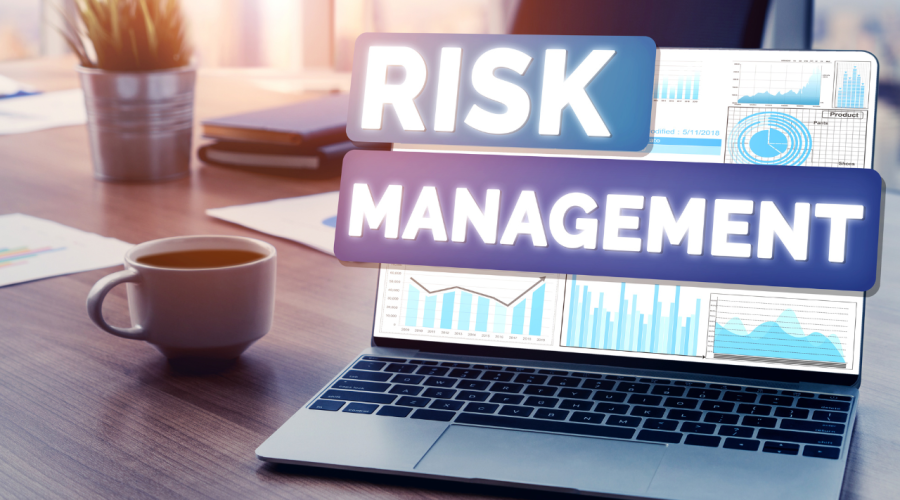Risk Management and Compliance: What You Need to Know
Risk Management and Compliance is more crucial than ever, especially for businesses navigating the complex world of cybersecurity. As cyber threats evolve and regulatory landscapes shift, companies must prioritize robust risk management strategies and ensure compliance with applicable laws and standards. This article aims to shed light on the essentials of risk management and compliance, providing a comprehensive guide for businesses to safeguard their operations and maintain regulatory adherence.
Understanding Risk Management and Compliance
Risk management and compliance are two sides of the same coin. While risk management focuses on identifying, assessing, and mitigating risks to minimize their impact on business operations, compliance ensures that a company adheres to external regulations and internal policies.
Together, they form a cohesive strategy that helps businesses navigate uncertainties and legal requirements.
The Importance of Risk Management and Compliance
- Protecting Sensitive Data
- Effective risk management and compliance programs help protect sensitive data from breaches and unauthorized access. Cybersecurity threats, such as phishing attacks, ransomware, and data breaches, can compromise valuable information. Implementing robust security measures and adhering to compliance standards can significantly reduce these risks.
- Ensuring Business Continuity
- Risk management and compliance are critical for business continuity. By proactively identifying potential threats and implementing strategies to address them, businesses can avoid disruptions that might otherwise cripple their operations. Compliance with industry standards and regulations also ensures that businesses can continue to operate legally and efficiently.
- Maintaining Customer Trust
- Customers expect companies to protect their personal and financial information. Demonstrating a strong commitment to risk management and compliance can enhance customer trust and loyalty. When customers know that a company takes their data security seriously, they are more likely to engage with and recommend that company.
- Avoiding Legal Penalties
- Non-compliance with regulations can lead to severe legal penalties, including fines and sanctions. Effective compliance programs ensure that businesses adhere to laws such as the General Data Protection Regulation (GDPR), the Health Insurance Portability and Accountability Act (HIPAA), and the Sarbanes-Oxley Act (SOX). These programs help avoid costly legal repercussions and protect the company’s reputation.
Key Components of Risk Management and Compliance
- Risk Assessment
- A thorough risk assessment is the foundation of effective risk management and compliance. This involves identifying potential threats, vulnerabilities, and the impact they could have on the business. Regular risk assessments help keep security measures up to date and relevant.
- Policy Development
- Developing clear, comprehensive policies is essential for risk management and compliance. These policies should outline procedures for data protection, incident response, and regulatory adherence. Employees must be aware of these policies and trained on their implementation.
- Incident Response Plan
- An incident response plan is crucial for addressing security breaches and compliance violations. This plan should detail steps to contain and mitigate incidents, communicate with stakeholders, and report breaches to regulatory bodies as required.
- Continuous Monitoring
- Continuous monitoring of systems and processes helps detect and respond to risks in real-time. This proactive approach ensures that potential issues are identified and addressed before they escalate. Monitoring also aids in maintaining compliance by ensuring that all activities adhere to established policies and regulations.
- Employee Training
- Regular employee training is vital for both risk management and compliance. Employees should be educated about the latest cybersecurity threats, the importance of following security protocols, and the specific compliance requirements relevant to their roles.
- Third-Party Management
- Managing third-party risks is an often-overlooked aspect of risk management and compliance. Companies must ensure that their vendors and partners adhere to the same security and compliance standards to avoid vulnerabilities introduced by external entities.
Implementing Risk Management and Compliance Strategies
- Develop a Comprehensive Risk Management Framework
- Start by developing a comprehensive risk management framework that includes risk identification, assessment, mitigation, and monitoring. This framework should be tailored to the specific needs and risks of the business.
- Adopt Industry Best Practices
- Adopting industry best practices can enhance both risk management and compliance efforts. Frameworks such as the NIST Cybersecurity Framework and ISO 27001 provide valuable guidelines for establishing robust security and compliance programs.
- Leverage Technology Solutions
- Technology solutions, such as security information and event management (SIEM) systems, can aid in monitoring and managing risks. These tools provide real-time insights into potential threats and compliance status, enabling timely responses.
- Regular Audits and Assessments
- Conducting regular audits and assessments helps ensure that risk management and compliance programs remain effective. These evaluations can identify gaps and areas for improvement, ensuring continuous enhancement of security measures.
- Engage with Experts
- Engaging with cybersecurity and compliance experts can provide valuable insights and guidance. These professionals can help develop tailored strategies, conduct assessments, and provide training to enhance risk management and compliance efforts.
Challenges in Risk Management and Compliance
- Evolving Threat Landscape
- The rapidly evolving threat landscape presents a significant challenge for risk management and compliance. Cybercriminals constantly develop new tactics, requiring businesses to stay vigilant and adapt their strategies continuously.
- Regulatory Changes
- Keeping up with regulatory changes is another major challenge. Laws and standards frequently evolve, and businesses must stay informed and adjust their compliance programs accordingly.
- Resource Constraints
- Implementing comprehensive risk management and compliance programs can be resource-intensive. Small and medium-sized businesses, in particular, may struggle with the financial and human resources needed to maintain robust security and compliance measures.
- Balancing Security and Usability
- Balancing security and usability is a common challenge. Overly stringent security measures can hinder business operations and user experience, while lax measures can increase risks. Finding the right balance is crucial for effective risk management and compliance.
The Future of Risk Management and Compliance
As technology continues to advance, the future of risk management and compliance will likely see increased reliance on automation and artificial intelligence. These technologies can enhance the efficiency and effectiveness of risk management and compliance programs by providing real-time insights, automating routine tasks, and predicting potential threats.
Furthermore, the growing interconnectedness of devices and systems, often referred to as the Internet of Things (IoT), will necessitate more comprehensive risk management and compliance strategies. Businesses will need to ensure that all connected devices are secure and compliant with relevant standards to prevent vulnerabilities.
In conclusion, risk management and compliance are essential components of a robust cybersecurity strategy. By understanding and implementing effective risk management and compliance programs, businesses can protect sensitive data, ensure business continuity, maintain customer trust, and avoid legal penalties. As cyber threats and regulatory landscapes continue to evolve, staying proactive and informed is crucial for success.
For businesses seeking to enhance their risk management and compliance efforts, eStreet Security offers tailored solutions and expert guidance. Our team of professionals is dedicated to helping you navigate the complexities of cybersecurity and compliance, ensuring your business remains secure and compliant. Contact eStreet Security today to learn more about how we can support your risk management and compliance needs.


